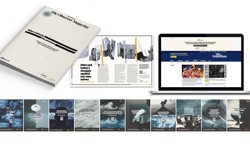In over a decade working in digital, I’ve always felt unwaveringly that at the heart of a successful digital vision must be the consumer. As long as what people want is clearly identified and aligned to the business opportunities, you will have a successful strategy. Deviate from this and you perish.
So, perhaps, one of the big challenges facing digital industries is the desire to jump on the next big thing to give the appearance of being at the cutting edge of technology. This “need to be NASA”, when you should actually be finding out what the consumer wants, continues to trip up businesses. The digital world is littered with the husks of unsuccessful me-to products temporarily buoyed up on a few column inches before quietly fading away to insignificance. The unseemly rush for inappropriate brands to get onto Secondlife or build social networks, without resorting to a moment’s analysis of precisely why they wanted to do it, were a couple of the more bewildering examples of the last decade.
But perhaps the greatest challenge is ensuring that digital products have simplicity and clarity that fulfils the consumer’s needs and complements existing publications. We have lost the luxury of attracting consumers over a period of time; they have so little time to engage with something it means that anything that confuses them at all will force them to abandon a product in favour of more easily understood rivals.
So, for me, any sound digital strategy must be based on insight into the consumer through analytics within your website and further afield. This, combined with iterative development, constant testing and making decisions based on the way users actually interact with products, will result in business success.
It’s difficult to overstate how much of a shift iterative development is from the traditional view of publishing. Where it was about delivering discrete magazines, newspapers or websites that stood on their own, now digital products have to be nurtured and improved continually over time. And, of course, it’s not just publishing that’s been affected in this way. Even the games industry has been forced to re-examine how it works in the wake of the enormous success of the iterative approach in Zynga’s Farmville game on Facebook.
In parallel, the gaming industry is moving from a blockbuster publishing model to a service model. In publishing, we will see a similar shift in the way that, rather than consuming our brands as discrete products, consumers will dip into our brands at any time, anywhere and to a depth they choose. The challenge will be in the successful monetisation of this always-on, always-there product.
So, while websites will remain crucial to people, the active consumption of content won’t just be at one or two points. Soon, the idea of having just the options of visiting a website or purchasing a newspaper or magazine in order to experience a brand will seem quaint.
This challenge is of course also a massive opportunity, particularly in the realms of mobile, video and, perhaps most of all, social media. It’s exciting to be working in an industry where our brands can be there in people’s lives whenever they are needed and in the form they’re needed.
Where as publishers, we have successfully coped with, and become masters of, a chiefly bi-platform publishing world, we now have to work in a world where information flows between people and across devices rather than residing at individual points. As long as we remember the consumer in all this though, we can’t fail.










